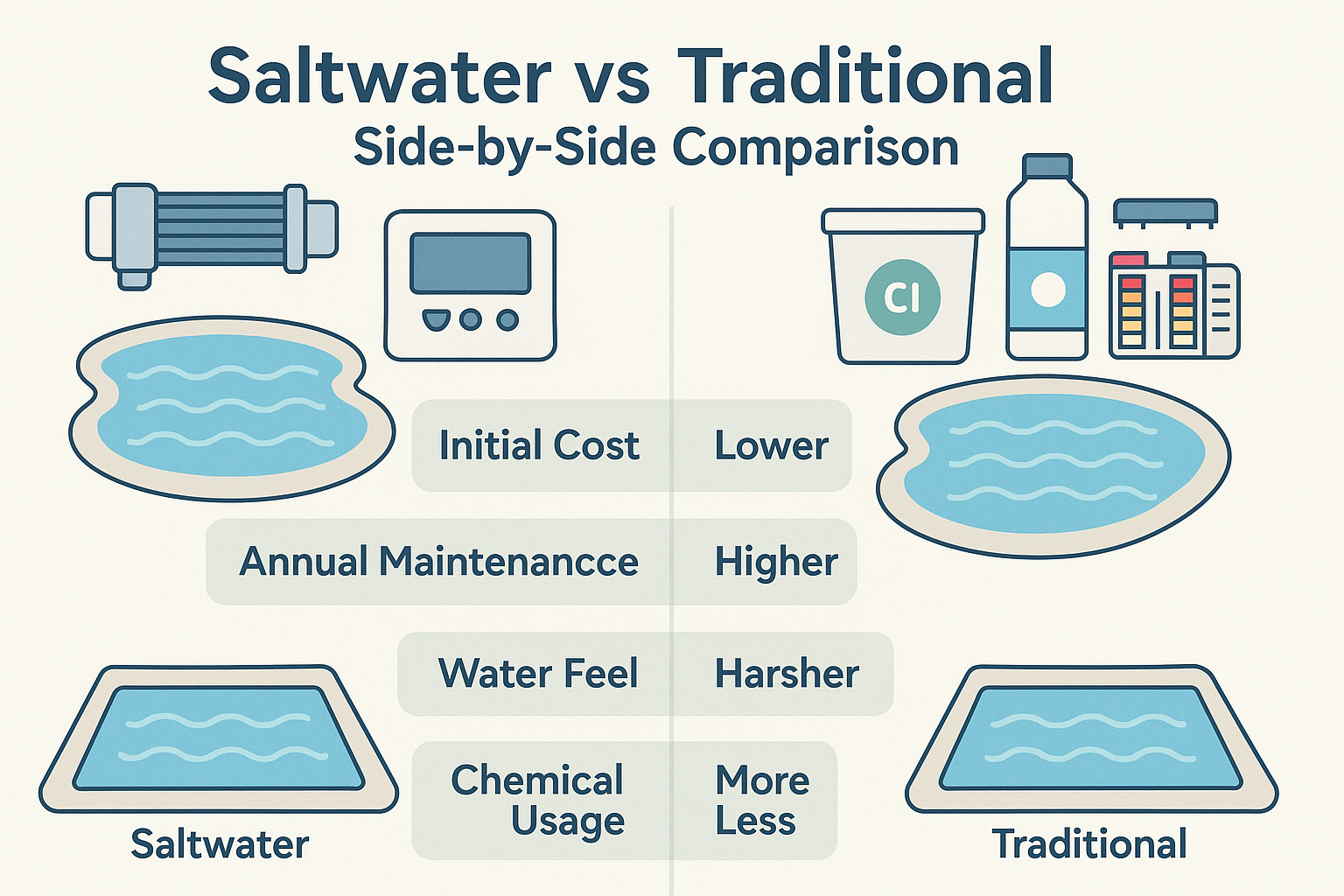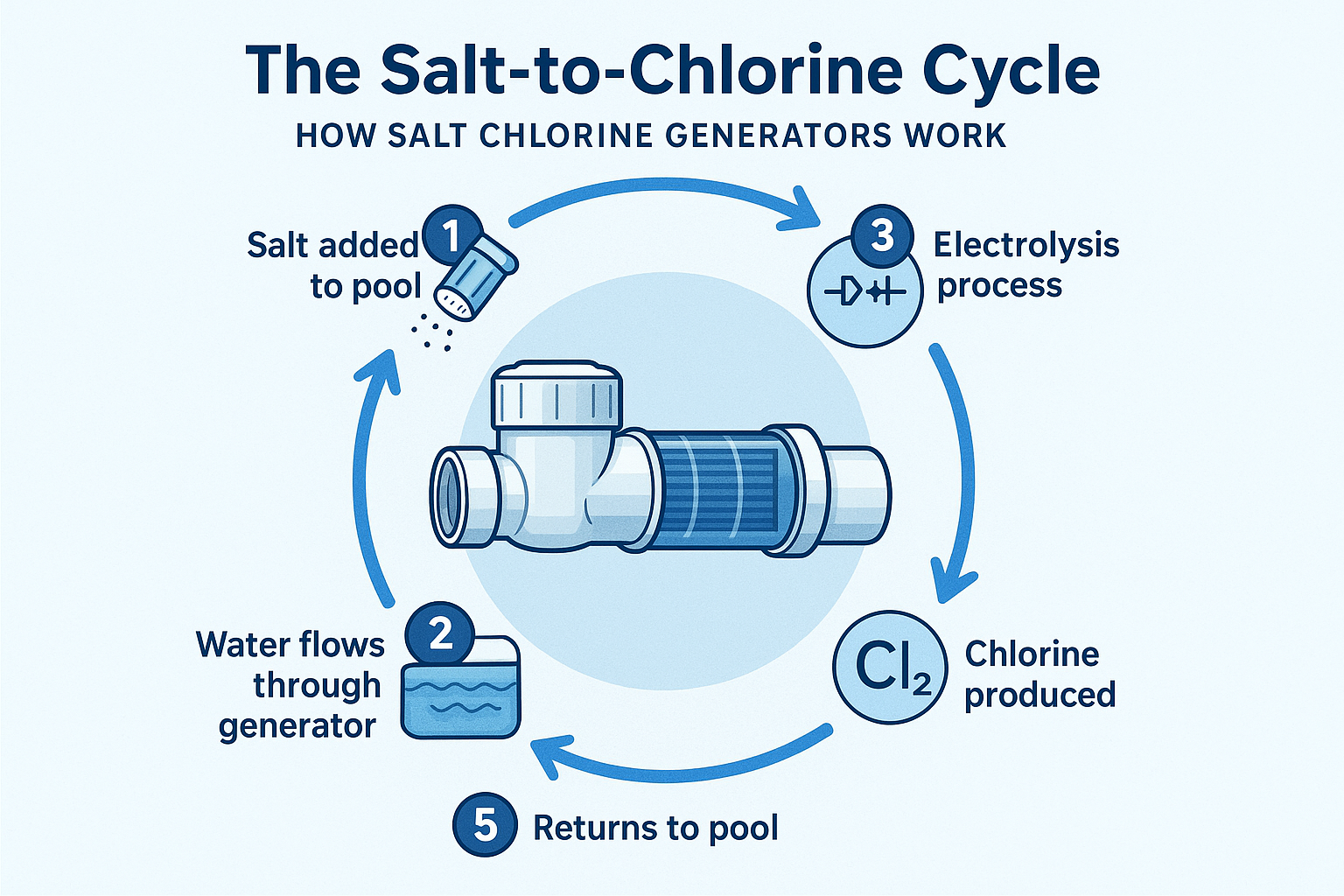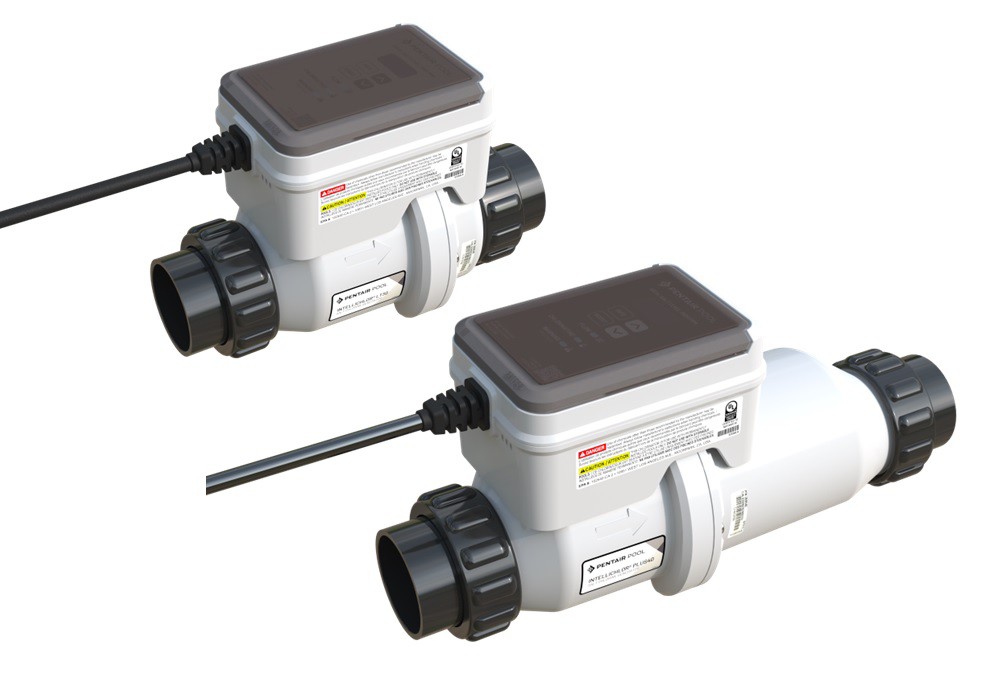Ultimate Guide to Saltwater Pool Systems in 2025
Have you ever dreamed of swimming in crystal-clear water that feels silky smooth on your skin, without the harsh chemical smell of traditional chlorine? Welcome to the world of saltwater pool systems! 🌊 As we dive into 2025, more homeowners are making the switch from traditional chlorine pools to saltwater alternatives, and for good reason. These innovative systems are revolutionizing backyard swimming, offering a more natural, comfortable, and often more economical swimming experience.
I remember the first time I swam in a saltwater pool – it was like discovering swimming all over again. No more red eyes, no more itchy skin, and definitely no more of that overwhelming chlorine smell that clings to your hair for days. If you’re considering making the switch or simply curious about what all the fuss is about, you’ve come to the right place!
Key Takeaways
- Saltwater pools use salt chlorine generators to produce chlorine naturally, resulting in softer water and reduced chemical maintenance
- Initial installation costs are higher but long-term savings on chemicals can offset the investment within 3-5 years
- Water feels softer and gentler on skin, hair, and eyes compared to traditional chlorine pools
- Regular maintenance is still required but is generally less intensive than traditional pool systems
- Salt levels are much lower than ocean water – about 1/10th the salinity of seawater
Understanding Saltwater Pool Systems: The Basics
Let’s start with a common misconception: saltwater pools aren’t chlorine-free. Instead, they use a clever process called electrolysis to convert salt (sodium chloride) into chlorine. The magic happens in a device called a salt chlorine generator or salt cell, which produces a steady, consistent level of chlorine without the need for manual chemical additions.
The salt concentration in these pools is surprisingly mild – typically around 3,000-3,500 parts per million (ppm). To put that in perspective, ocean water contains about 35,000 ppm of salt. That’s why you won’t taste much salt when swimming, and you definitely won’t float like you’re in the Dead Sea!
How Salt Chlorine Generators Work
The process is beautifully simple:
- Salt is added to the pool water (regular table salt works just fine!)
- Water passes through the generator cell
- Electrolysis splits the salt molecules into sodium and chlorine
- Chlorine sanitizes the pool and then converts back to salt
- The cycle continues indefinitely
This continuous cycle means you’re not constantly adding harsh chemicals to your pool. It’s like having a mini chlorine factory right in your backyard! 🏭
Benefits of Saltwater Pool Systems
1. Gentler on Your Body 💆♀️
One of the biggest advantages I’ve experienced with saltwater pools is how much better they feel. The water is noticeably softer, almost silky. Your skin feels moisturized rather than dried out, and that post-swim shower doesn’t feel quite as urgent. Many people with sensitive skin or conditions like eczema find saltwater pools much more comfortable.
2. Lower Chemical Maintenance
While you’ll still need to monitor and balance your pool chemistry, the day-to-day chemical maintenance is significantly reduced. No more lugging heavy chlorine buckets or dealing with caustic chemicals. The salt cell does most of the work for you! This makes pool maintenance less of a chore and more of a simple routine. For those interested in understanding pool cleaning service costs, switching to saltwater can potentially reduce your monthly service expenses.
3. Cost Savings Over Time 💰
Here’s a breakdown of typical costs:
| Cost Category | Traditional Chlorine | Saltwater System |
|---|---|---|
| Initial Setup | $300-500 | $1,500-2,500 |
| Annual Chemicals | $300-800 | $70-100 |
| Cell Replacement (3-7 years) | N/A | $500-800 |
| 5-Year Total | $1,800-4,500 | $1,850-3,100 |
4. More Stable Chlorine Levels
Traditional pools often experience chlorine spikes and dips, leading to algae growth or over-chlorination. Saltwater systems maintain a steady chlorine level, resulting in consistently clean, clear water. This stability means fewer “pool emergencies” and more time enjoying your pool!
Installation and Setup Process
Installing a saltwater pool system isn’t as daunting as it might seem. Whether you’re converting an existing pool or starting fresh, the process is straightforward with the right approach.
For New Pools:
- Design integration from the start
- Proper plumbing for optimal flow
- Correctly sized equipment based on pool volume
- Salt-resistant materials throughout
For Pool Conversions:
- Assess your current equipment – most pumps and filters are compatible
- Install the salt chlorine generator after the filter
- Add the required amount of salt (usually 50-80 lbs per 1,000 gallons)
- Balance the water chemistry
- Start up the system and enjoy!
When planning your installation, it’s worth consulting with reliable pool service professionals who have experience with saltwater conversions.
Maintenance Requirements and Best Practices

Don’t let anyone tell you saltwater pools are maintenance-free – they’re not! However, the maintenance is generally easier and less frequent than traditional pools. Here’s what you need to know:
Weekly Tasks:
- Test and balance pH (ideal range: 7.2-7.6)
- Check salt levels (typically 3,000-3,500 ppm)
- Clean skimmer baskets and pump strainer
- Brush pool walls and floor to prevent algae
Monthly Tasks:
- Test total alkalinity (80-120 ppm)
- Check calcium hardness (200-400 ppm)
- Inspect salt cell for calcium buildup
- Test cyanuric acid levels (70-80 ppm)
Seasonal Maintenance:
Just like traditional pools, saltwater systems need seasonal attention. Check out this helpful checklist to keep your pool clean this summer for comprehensive seasonal maintenance tips.
Common Myths and Misconceptions Debunked
Let me clear up some confusion about saltwater pools:
Myth #1: “Saltwater pools taste like the ocean” 🌊
Reality: The salt level is so low you can barely taste it – it’s closer to a teardrop than seawater.
Myth #2: “Salt will corrode everything”
Reality: While salt can be corrosive at high concentrations, proper pool salt levels pose minimal risk to quality pool equipment.
Myth #3: “You never need to add chemicals”
Reality: You’ll still need to balance pH, alkalinity, and occasionally shock the pool.
Myth #4: “Saltwater pools are always crystal clear”
Reality: Like any pool, neglected maintenance will lead to problems. The system makes it easier, not automatic!
Choosing the Right Saltwater System for Your Pool
Selecting the appropriate salt chlorine generator is crucial for optimal performance. Consider these factors:
Pool Size Matters
- Small pools (up to 15,000 gallons): Basic residential units work great
- Medium pools (15,000-30,000 gallons): Mid-range systems with higher output
- Large pools (30,000+ gallons): Commercial-grade or dual-cell systems
Features to Look For:
- Self-cleaning capabilities to reduce maintenance
- Digital controls for easy monitoring
- Boost mode for heavy use periods
- Flow sensor to protect the cell
- Warranty coverage (longer is better!)
Cost Analysis: Initial Investment vs. Long-term Savings
Let’s talk money – because that’s often the deciding factor. Yes, the initial investment is higher, but here’s the complete financial picture:
Initial Costs:
- Salt chlorine generator: $800-2,000
- Installation: $300-500
- Initial salt: $100-200
- Total: $1,200-2,700
Annual Operating Costs:
- Salt replenishment: $50-100
- Electricity: $50-150
- Cell cleaning supplies: $20-30
- Total: $120-280
Compare this to spending $300-800 annually on chlorine and other chemicals for a traditional pool. The break-even point typically occurs within 3-5 years, after which you’re saving money every year! Understanding the cost guide for pool cleaning services can help you budget for professional maintenance if needed.
Environmental Considerations 🌱

Saltwater pool systems offer several environmental benefits:
- Reduced chemical transportation (fewer trips to the pool store)
- Less plastic packaging from chemical containers
- Lower chemical discharge into the environment
- Reduced water waste due to more stable chemistry
However, be mindful of salt discharge when draining or backwashing. Some municipalities have restrictions on saltwater discharge, so check your local regulations.
Troubleshooting Common Issues
Even the best systems occasionally hiccup. Here are solutions to common problems:
Problem: Low Chlorine Production
Solutions:
- Check salt levels (add if below 3,000 ppm)
- Clean the salt cell
- Verify proper water flow
- Test and adjust cyanuric acid levels
Problem: High Salt Readings
Solutions:
- Dilute with fresh water
- Check your salt test kit accuracy
- Ensure rain hasn’t concentrated salt levels
Problem: Calcium Buildup on Cell
Solutions:
- Regular cleaning with muriatic acid solution
- Maintain proper water balance
- Consider a self-cleaning system upgrade
The Future of Saltwater Pool Technology in 2025
The pool industry continues to innovate, and 2025 brings exciting developments:
- Smart integration: WiFi-enabled systems you can control from your phone
- AI-powered monitoring: Systems that predict and prevent problems
- Energy-efficient cells: Lower power consumption without sacrificing performance
- Advanced diagnostics: Real-time health monitoring of your system
Making the Switch: Is It Right for You?
Before making the leap, consider these factors:
Saltwater Pools Are Ideal If:
- You have sensitive skin or allergies ✓
- You want reduced chemical handling ✓
- Long-term cost savings appeal to you ✓
- You prefer a more “natural” swimming experience ✓
- You’re building a new pool or doing major renovations ✓
You Might Prefer Traditional Chlorine If:
- You’re on a tight initial budget ✗
- You frequently host large pool parties (high bather loads) ✗
- You live in an area with saltwater discharge restrictions ✗
- You prefer complete control over chlorine levels ✗
Winterization and Seasonal Care
Proper winterization is crucial for protecting your investment. When planning for a successful pool closing, saltwater systems require some special considerations:
- Run the system until water temperature drops below 60°F
- Remove and store the salt cell indoors (in freezing climates)
- Balance water chemistry before closing
- Add appropriate winterizing chemicals
- Follow standard pool closing procedures
Saltwater vs Traditional Pool Cost Calculator
Cost Analysis Results
Saltwater Total
$0
$0/year avg
Traditional Total
$0
$0/year avg
You’ll save $0 over 5 years with a saltwater system!
Break-even point: Year 3
Conclusion: Dive Into the Future of Pool Ownership
As we’ve explored throughout this guide, saltwater pool systems represent a significant advancement in pool technology. They offer a more comfortable swimming experience, reduce the need for harsh chemicals, and can provide long-term cost savings. While the initial investment is higher, the benefits – from silky-smooth water to simplified maintenance – make it a worthwhile consideration for many pool owners.
The decision to switch to a saltwater system isn’t just about the technology; it’s about enhancing your lifestyle and creating a more enjoyable backyard oasis. Whether you’re building a new pool or considering a conversion, the information in this guide should help you make an informed decision.
Ready to take the next step? Here’s what you should do:
- Calculate your potential savings using our interactive calculator above
- Get quotes from local pool professionals for system installation
- Talk to saltwater pool owners in your area about their experiences
- Consider your specific needs and pool usage patterns
- Make the switch when you’re ready – your skin will thank you! 🏊♀️
Remember, the best pool is one that you’ll actually use and enjoy. If a saltwater system helps you spend more time in the water and less time maintaining it, then it’s absolutely worth the investment. Here’s to many years of crystal-clear, comfortable swimming!
